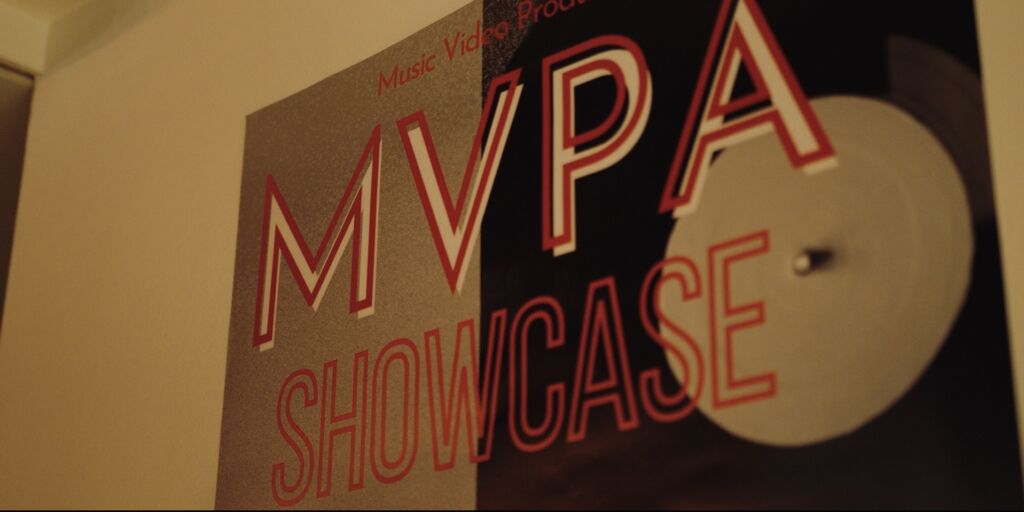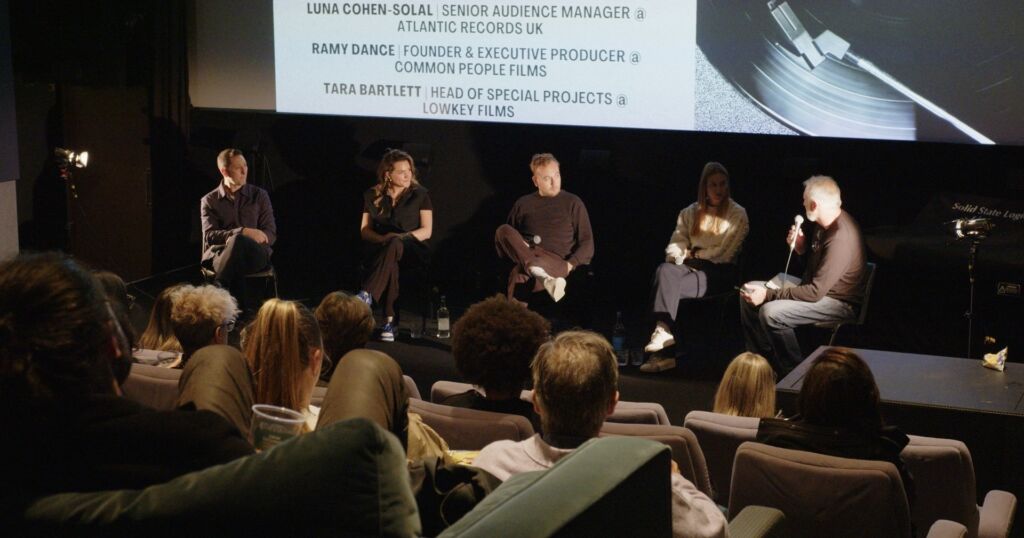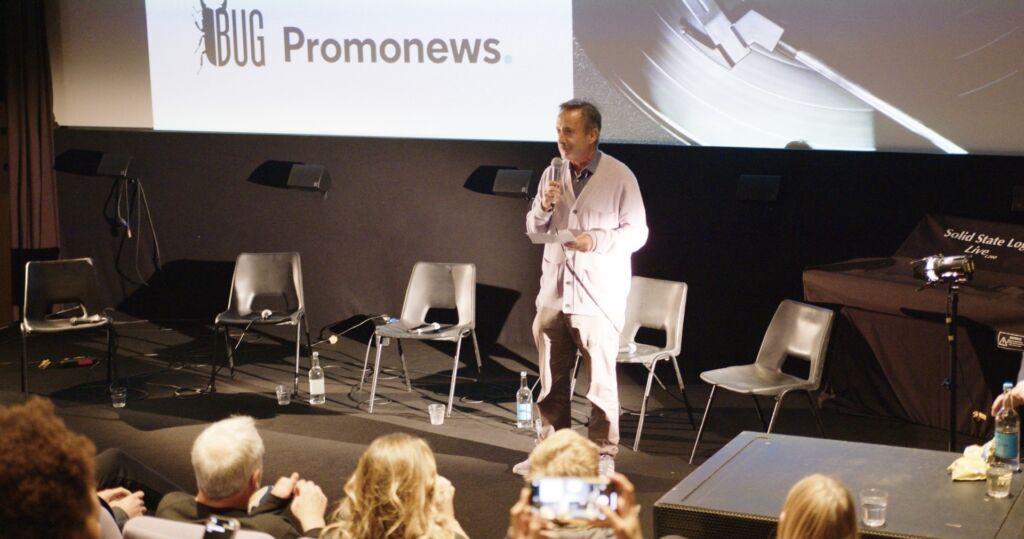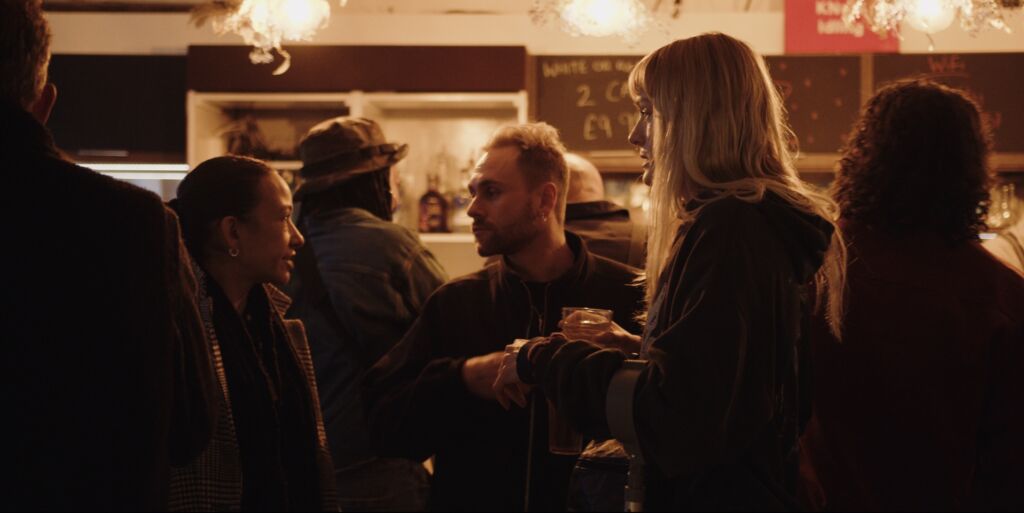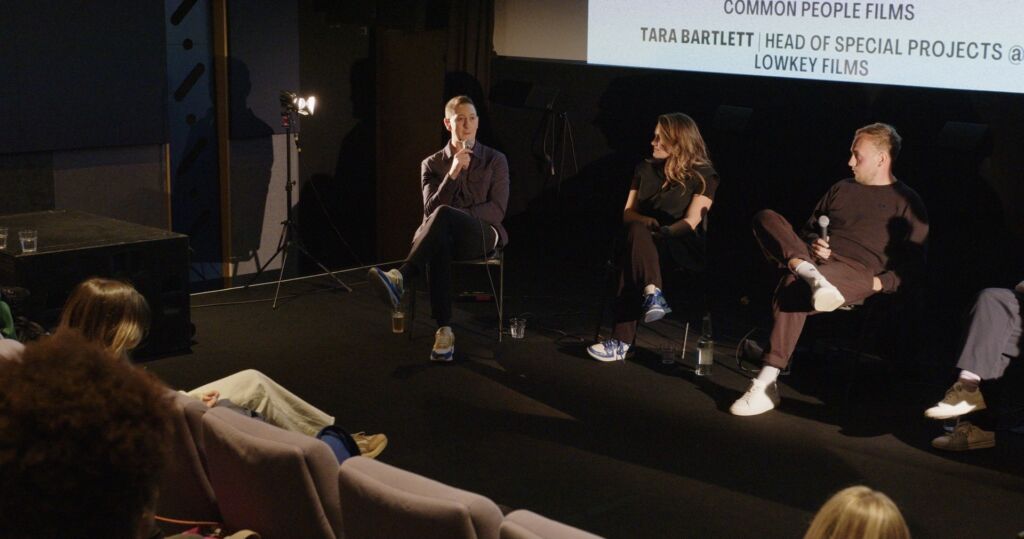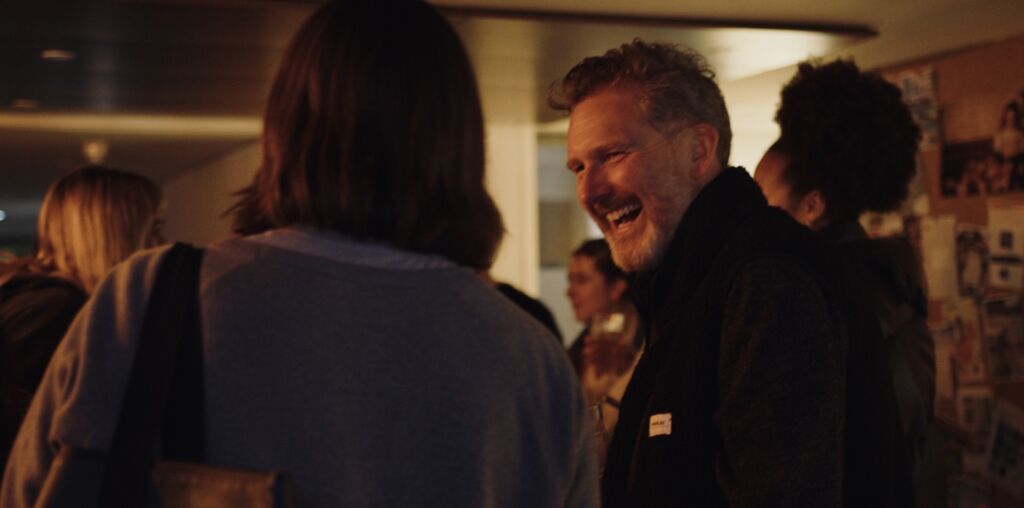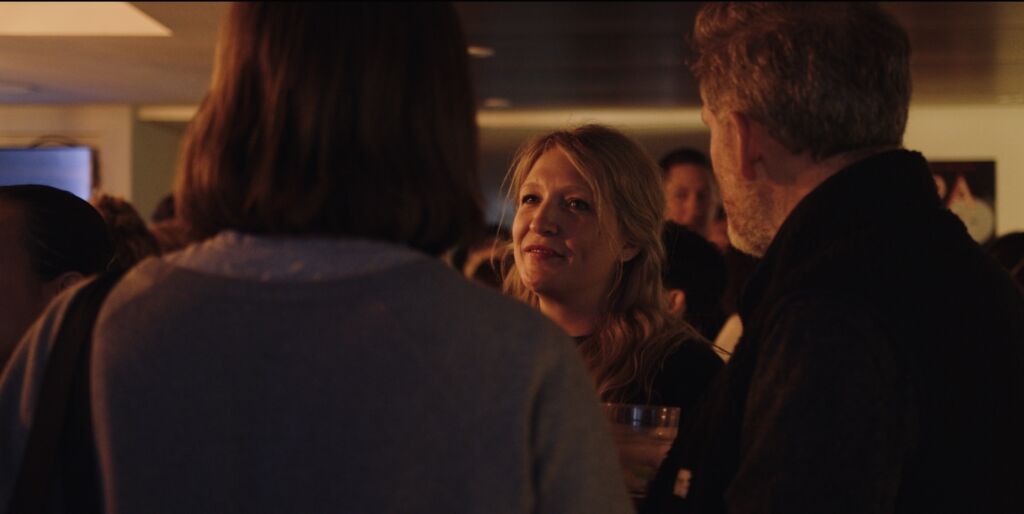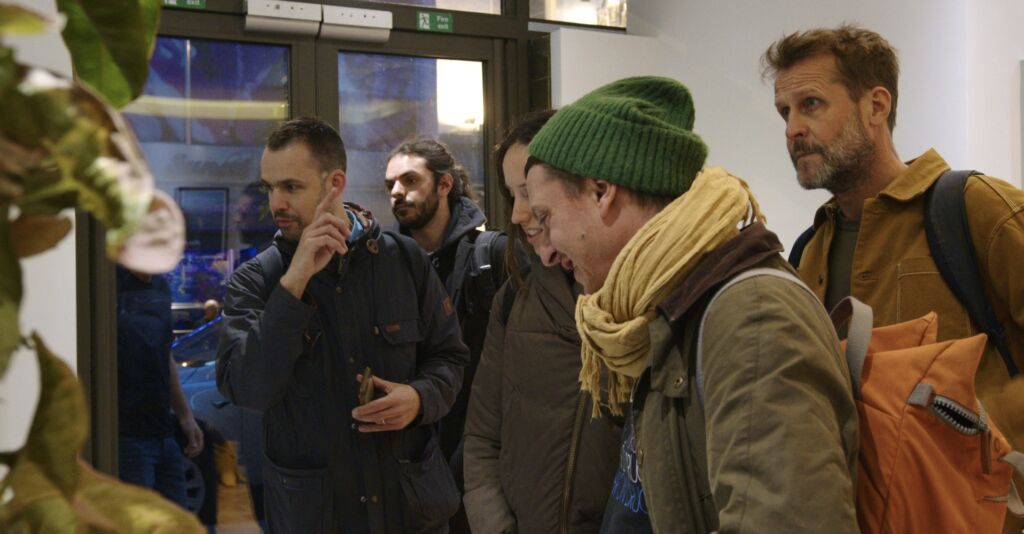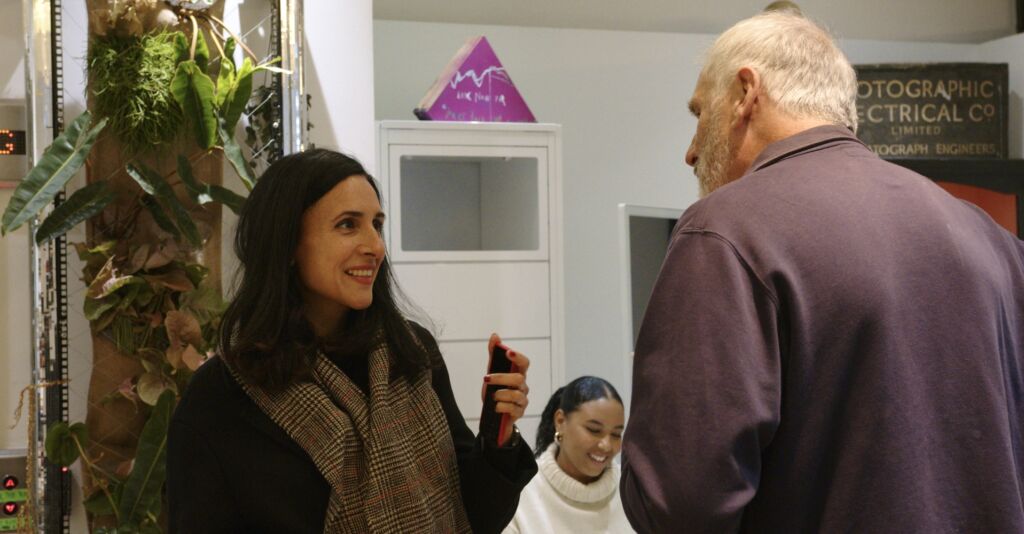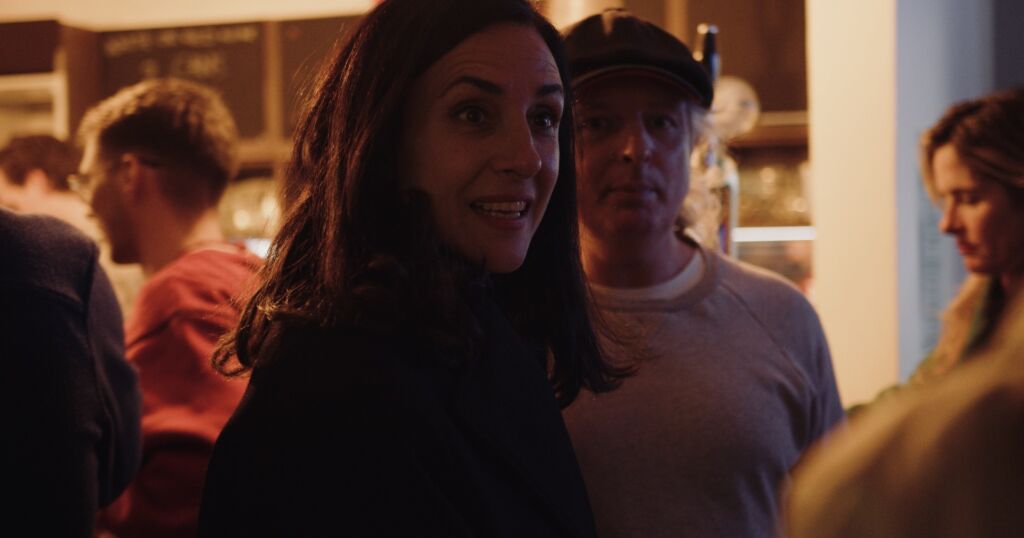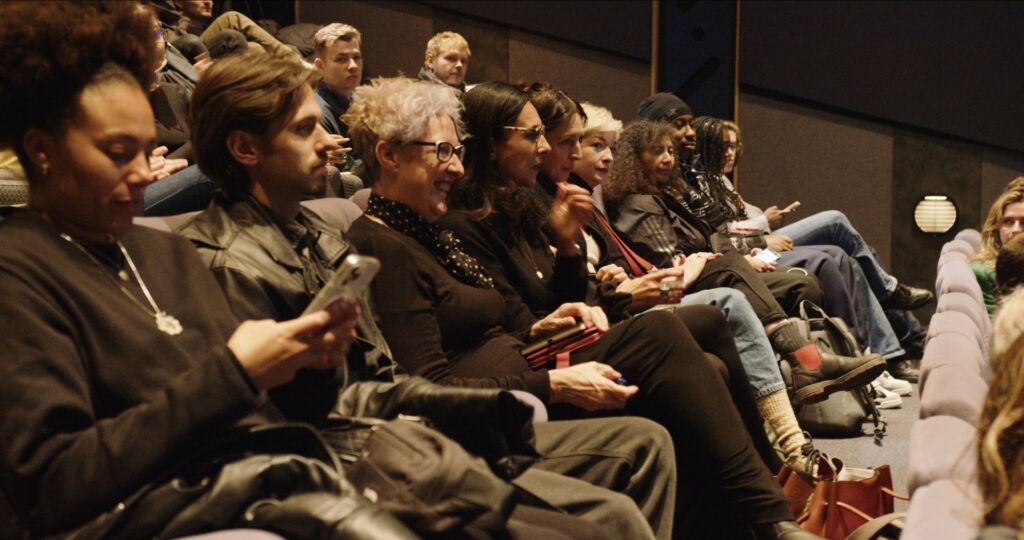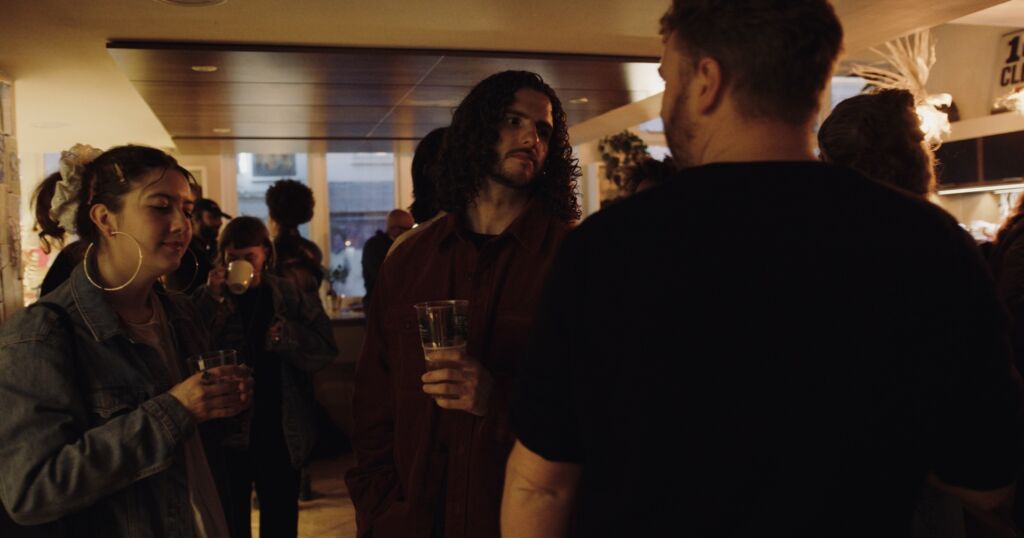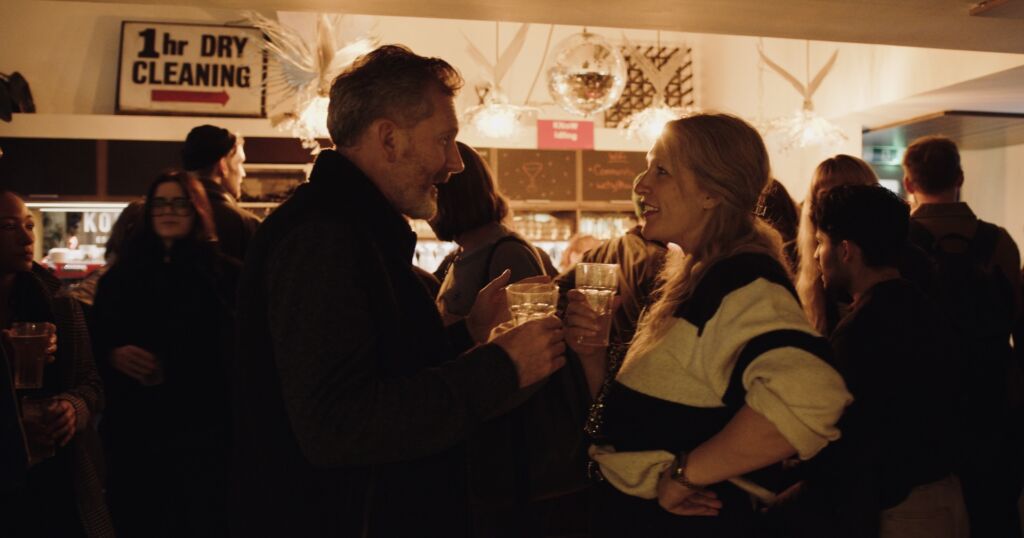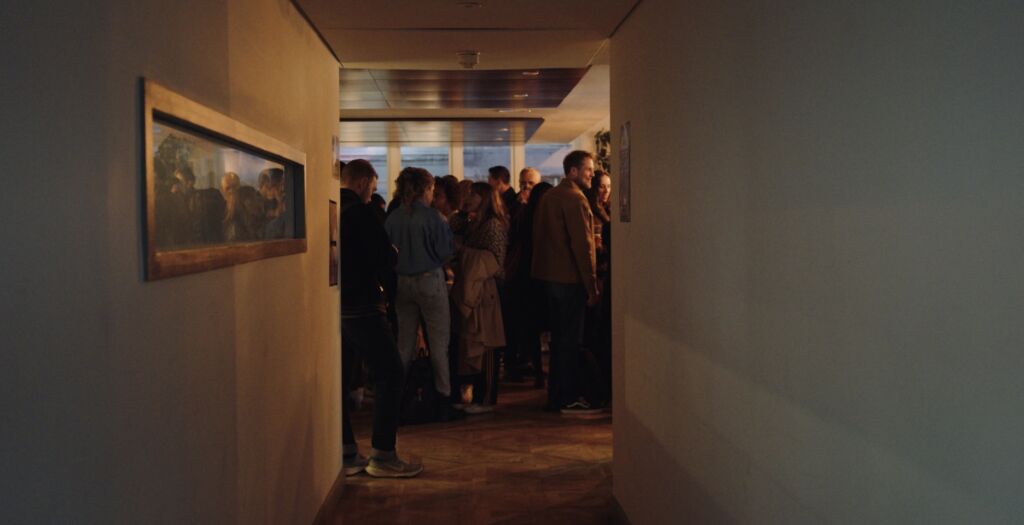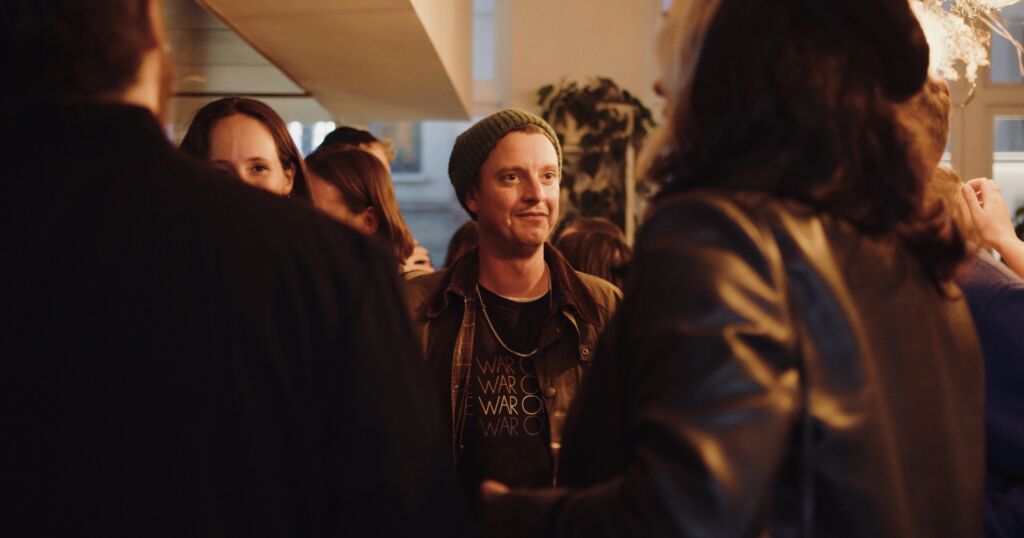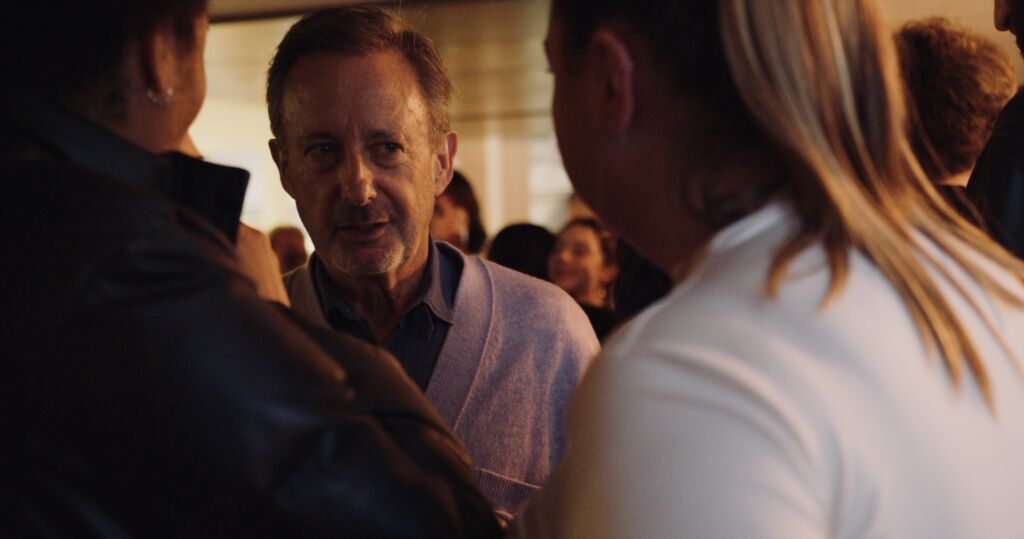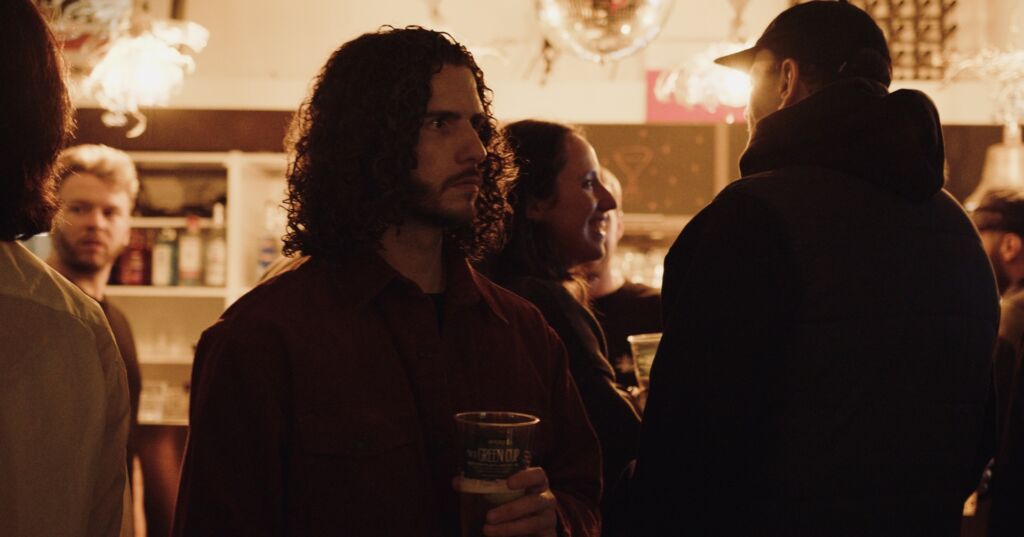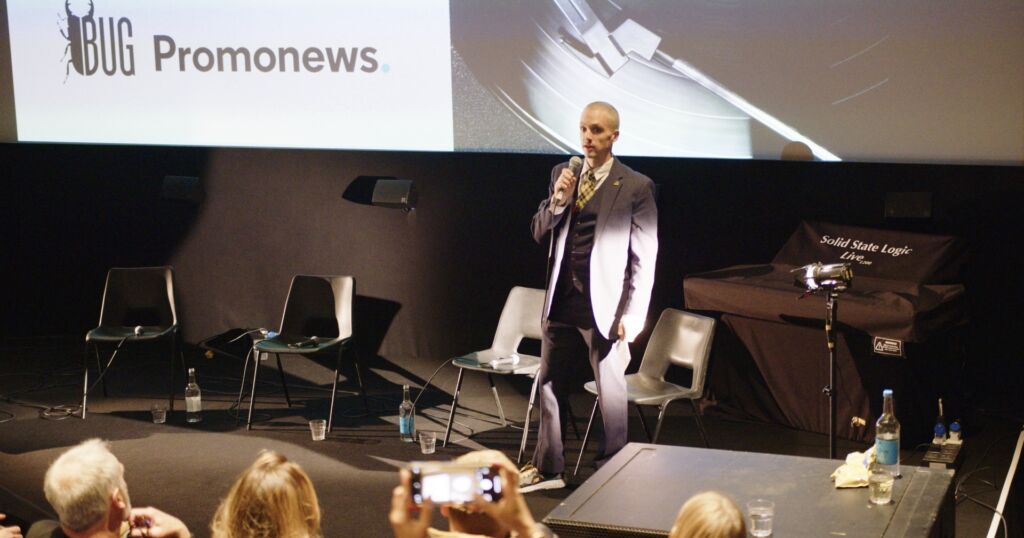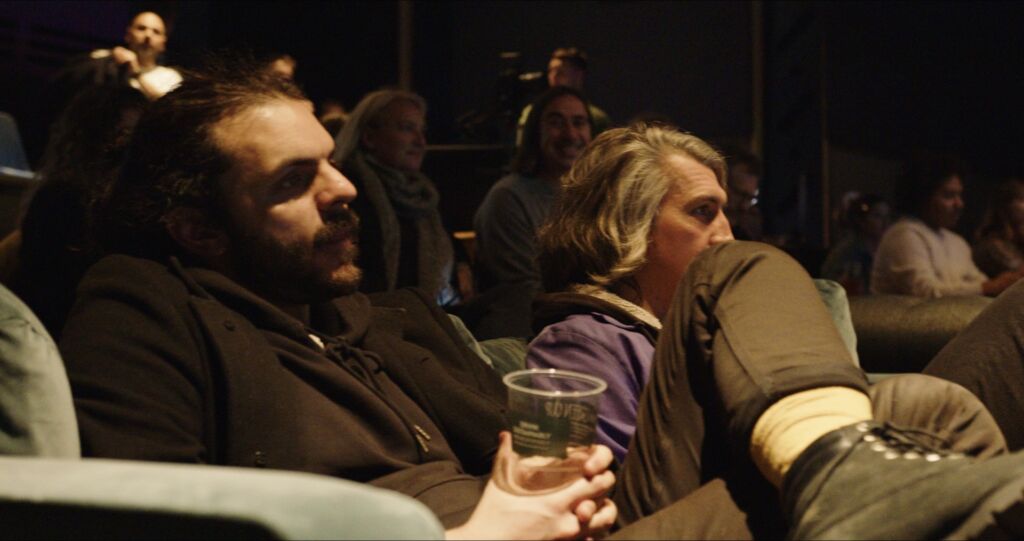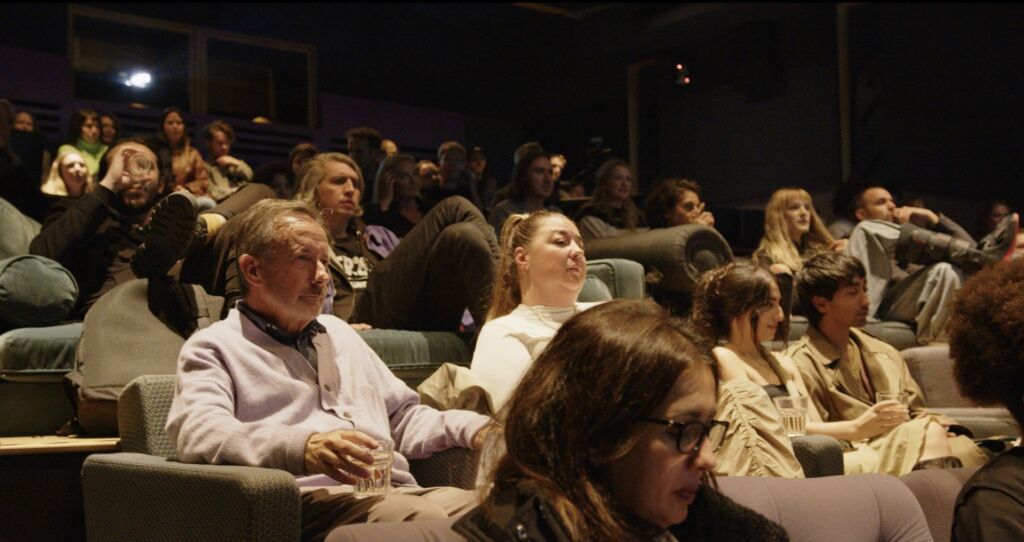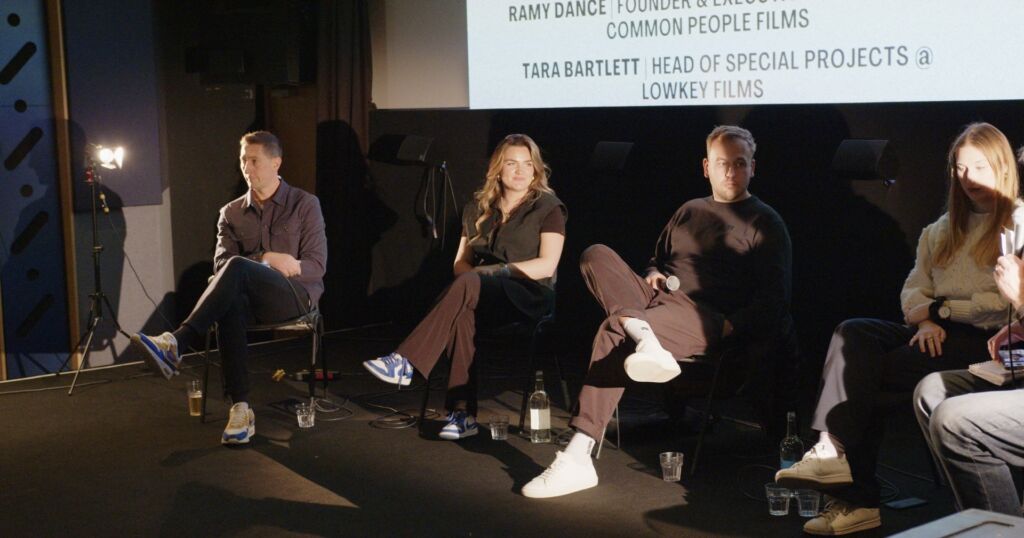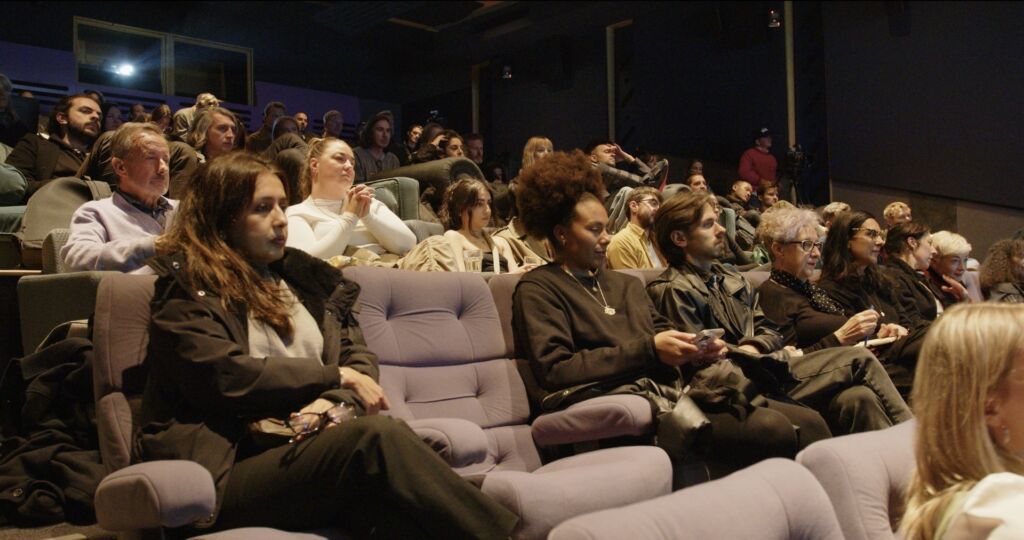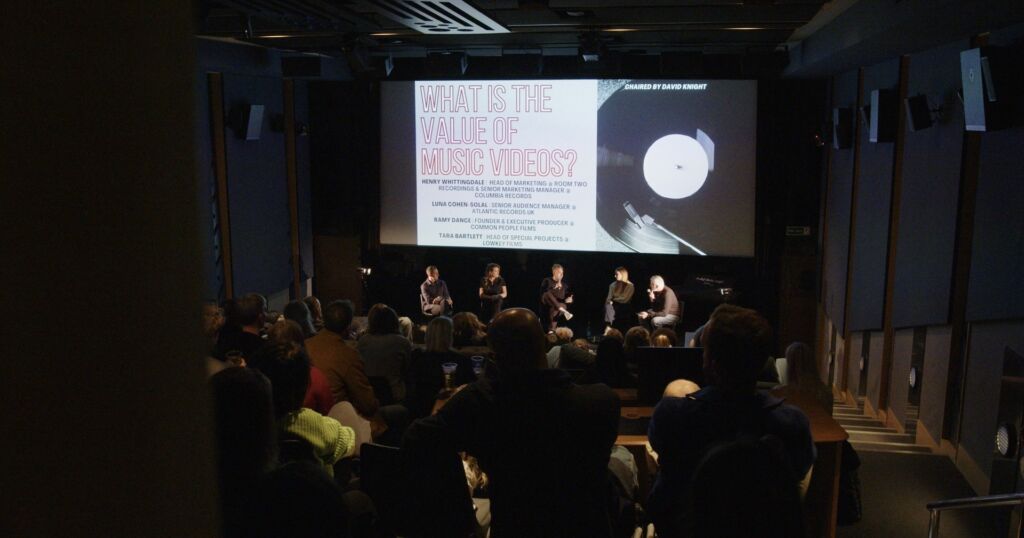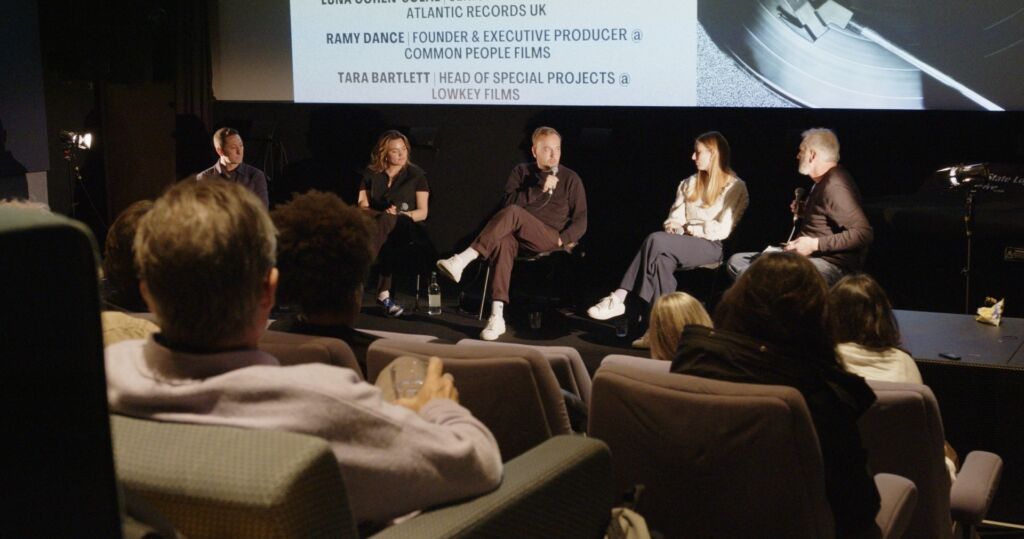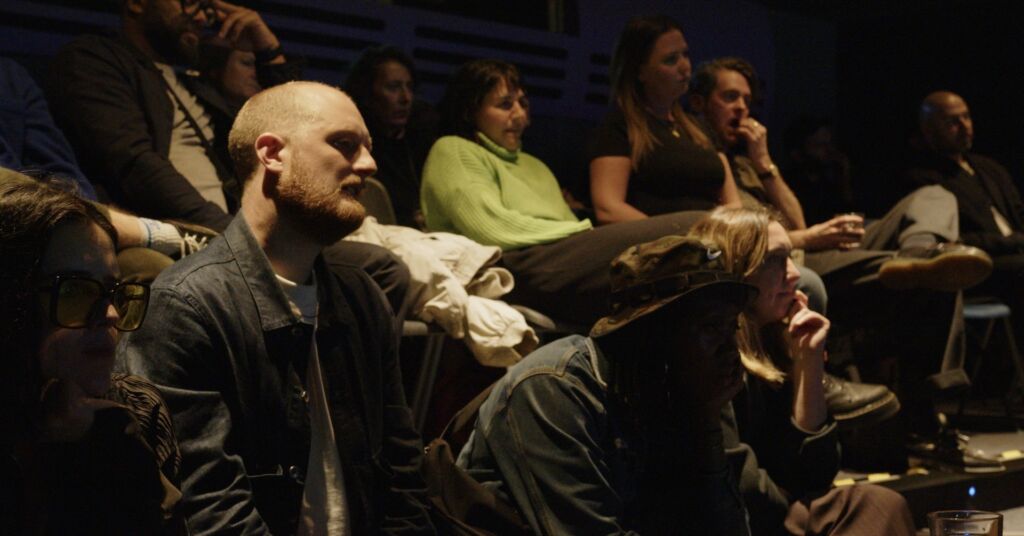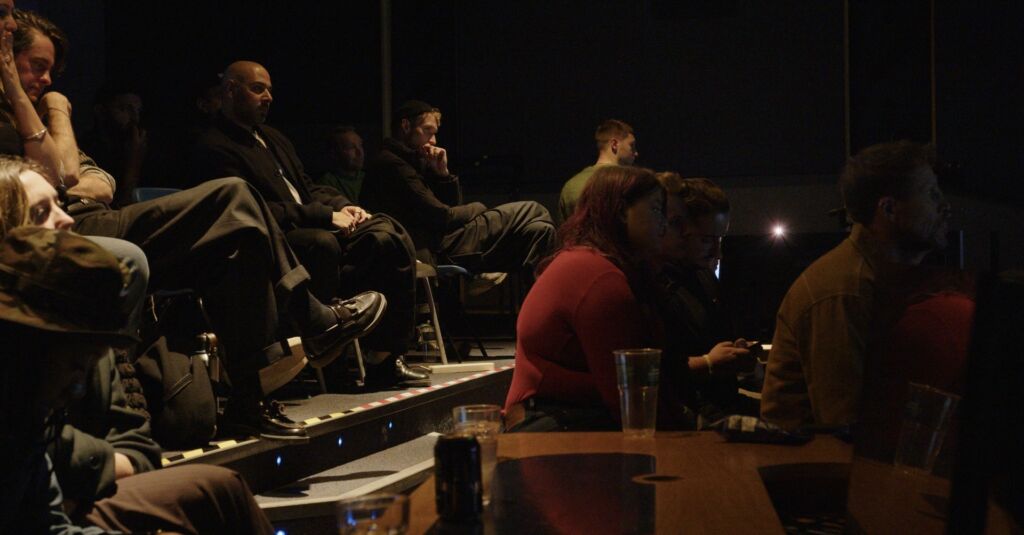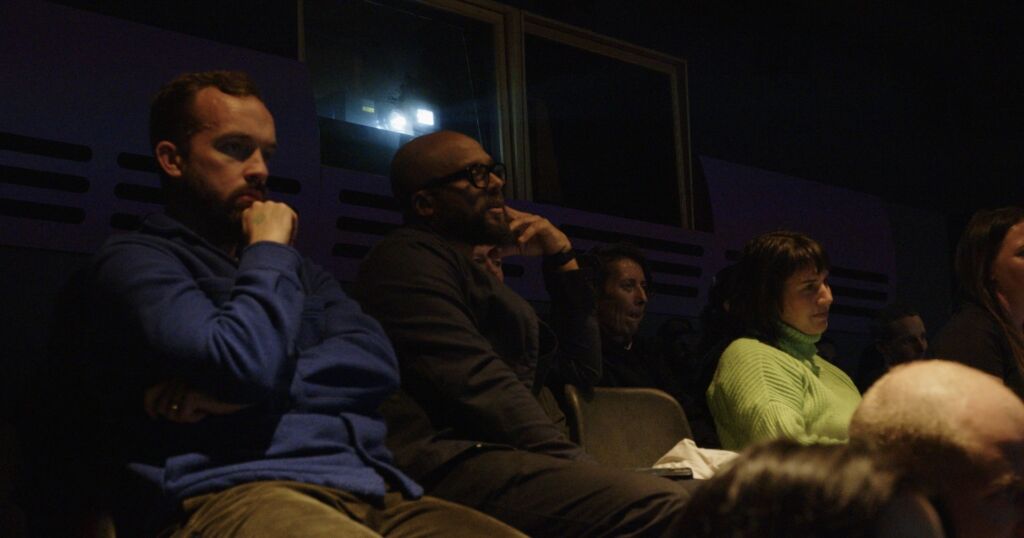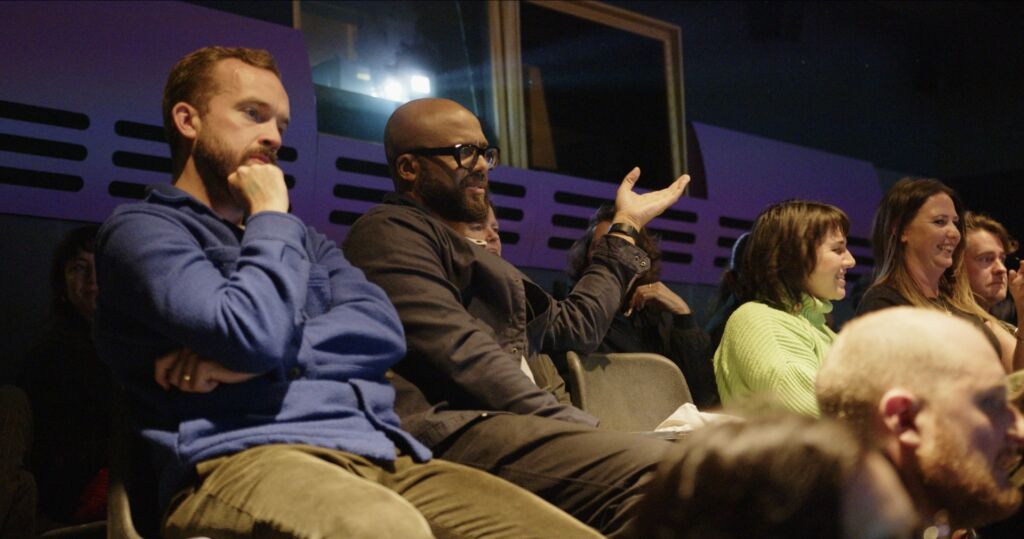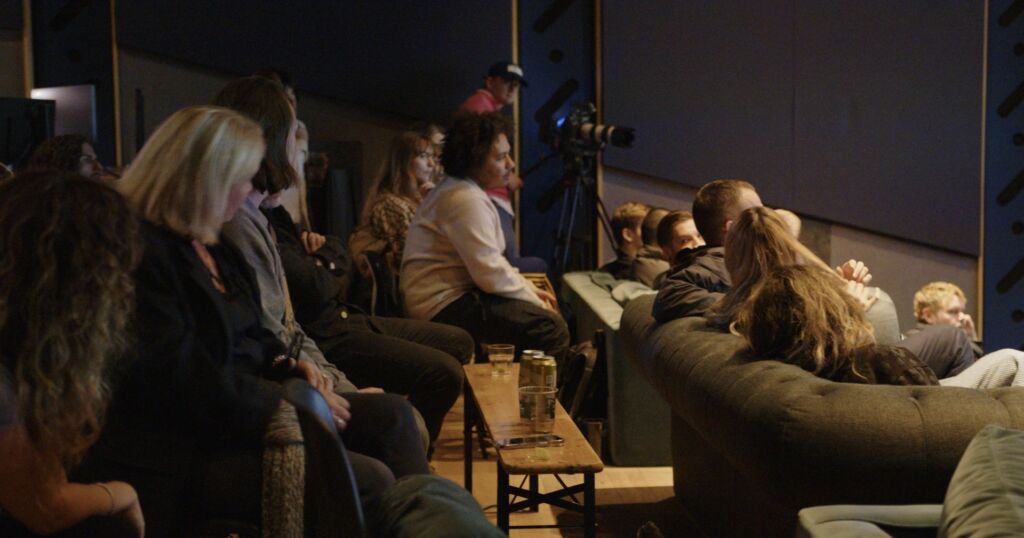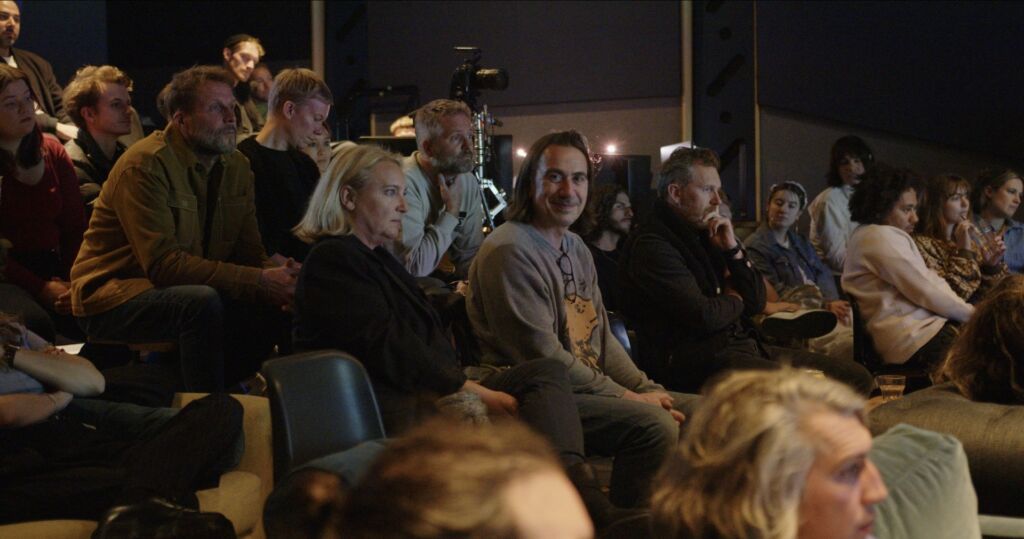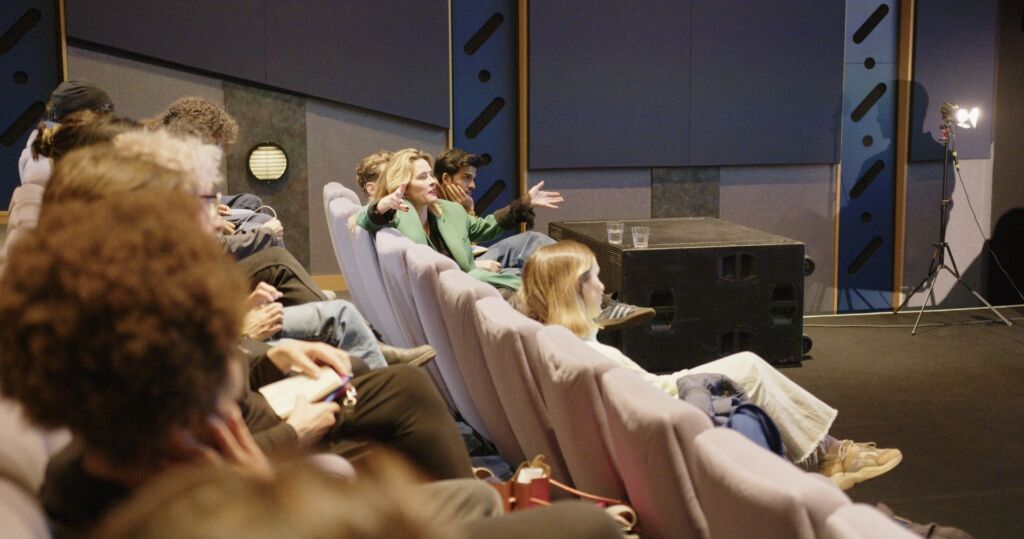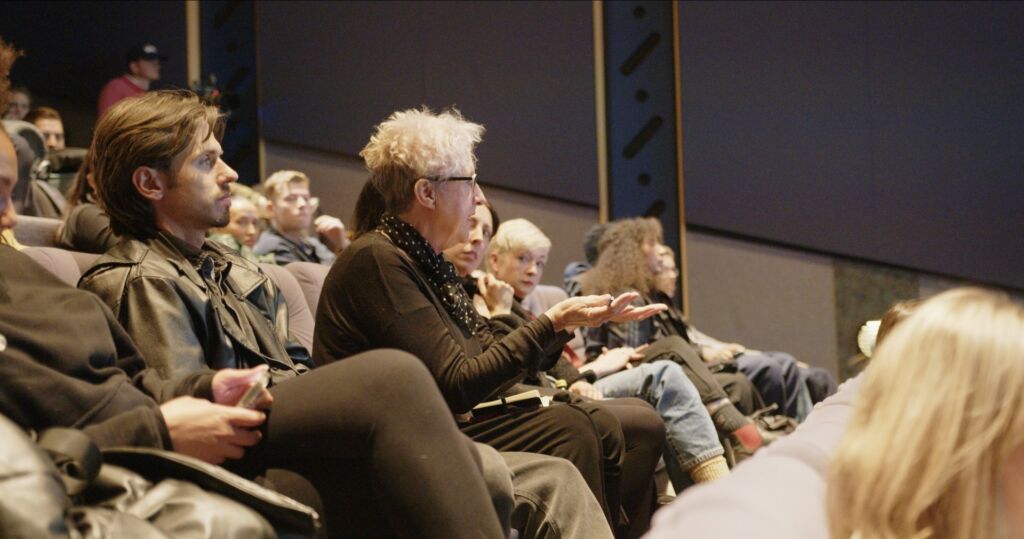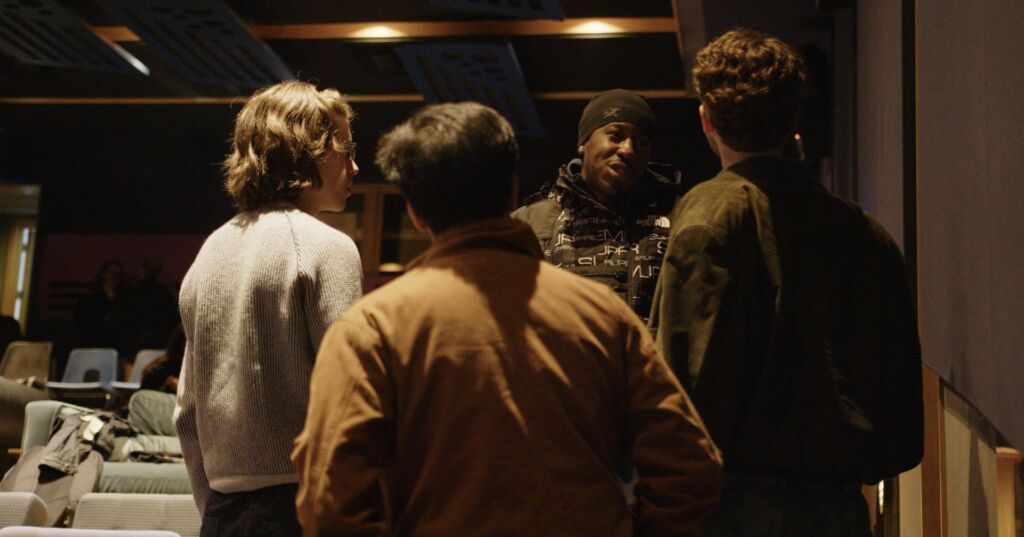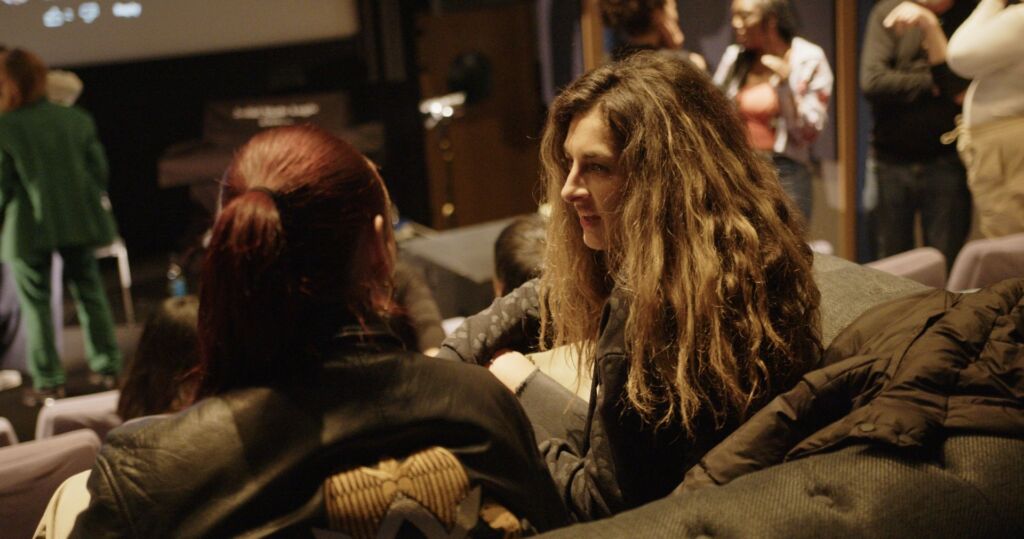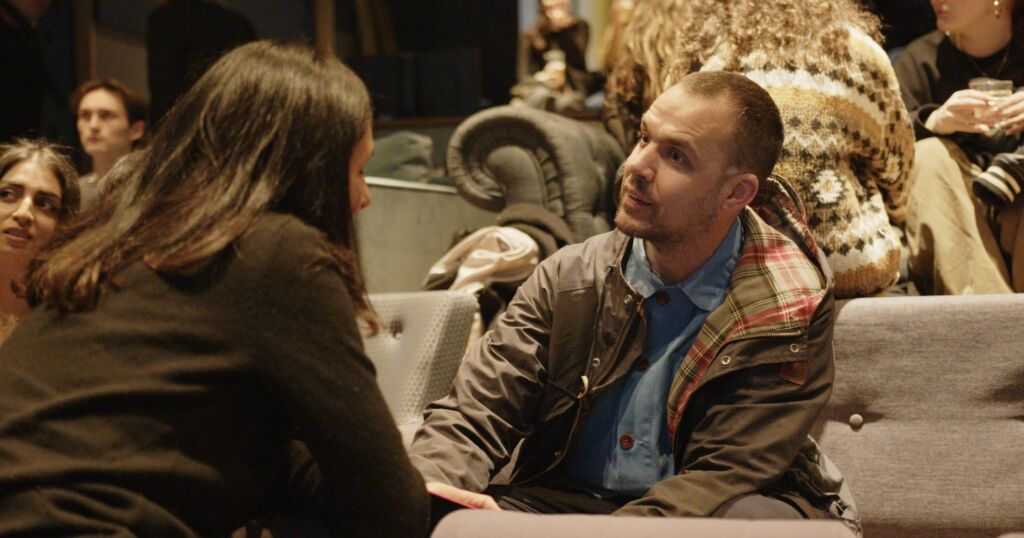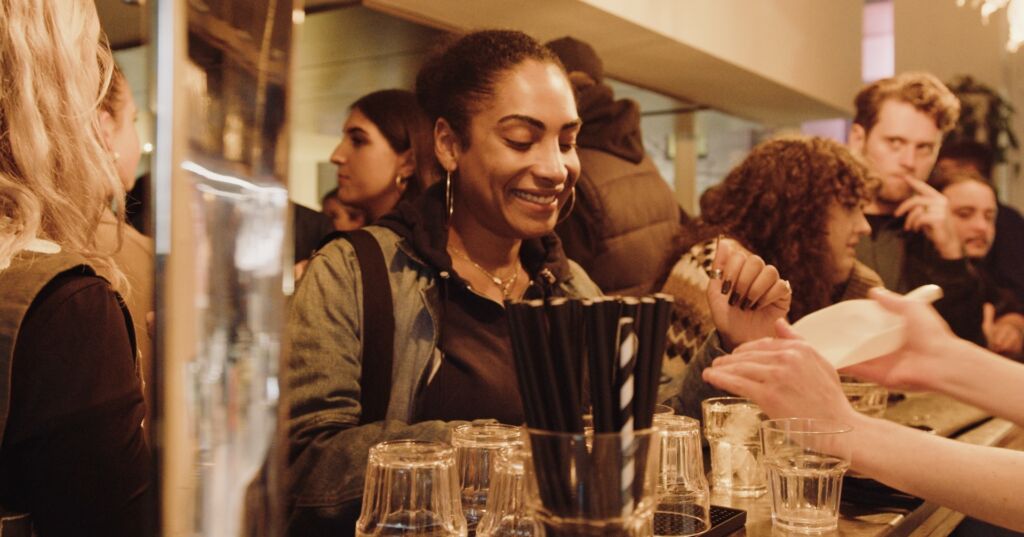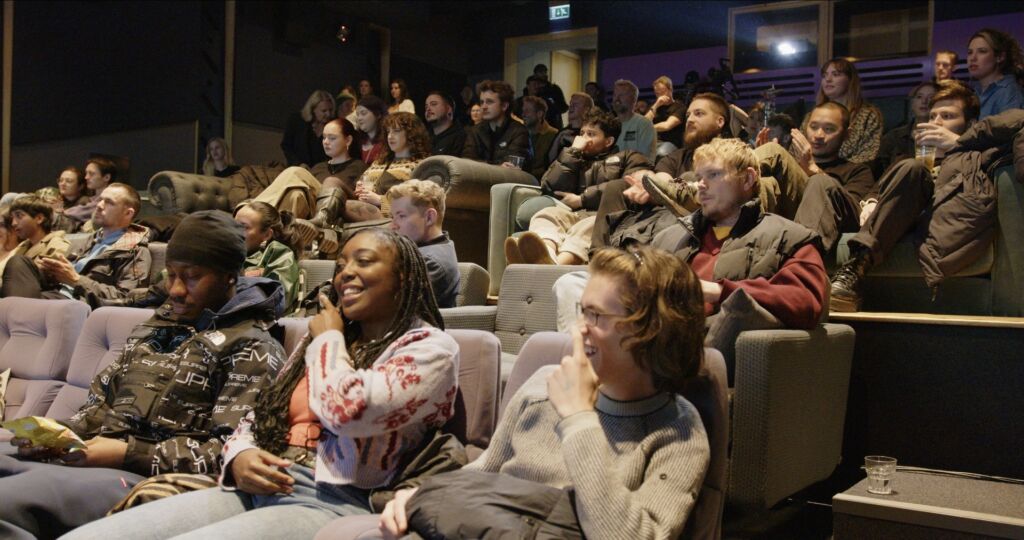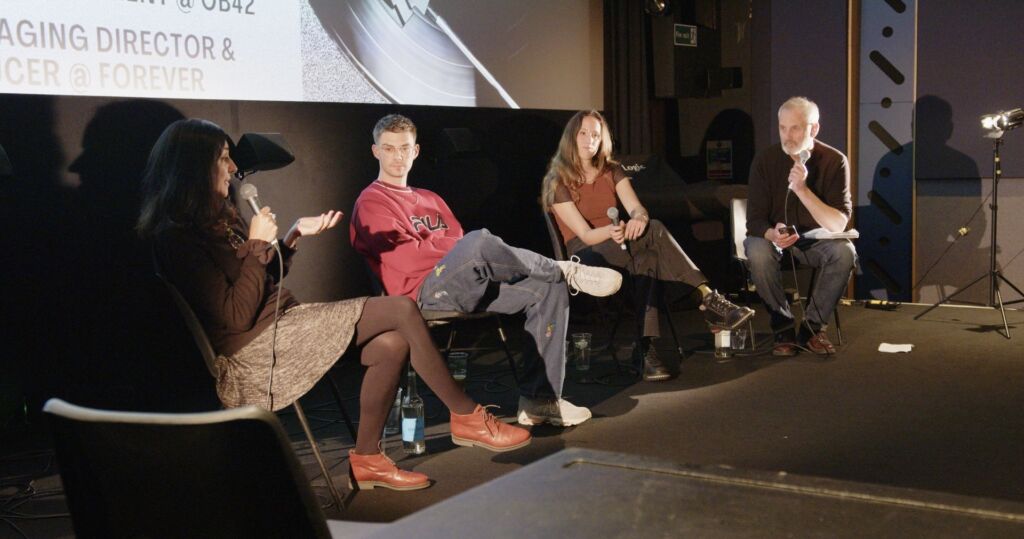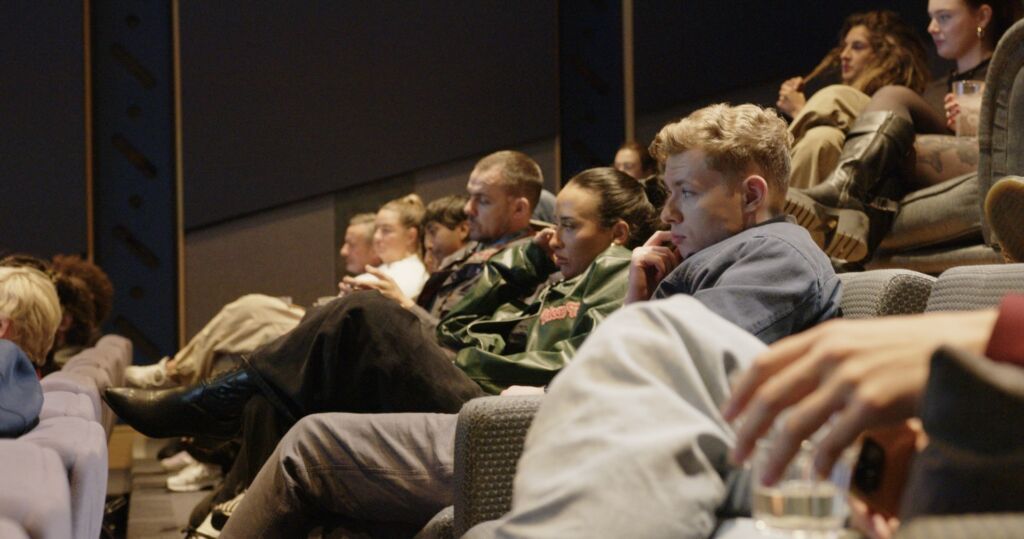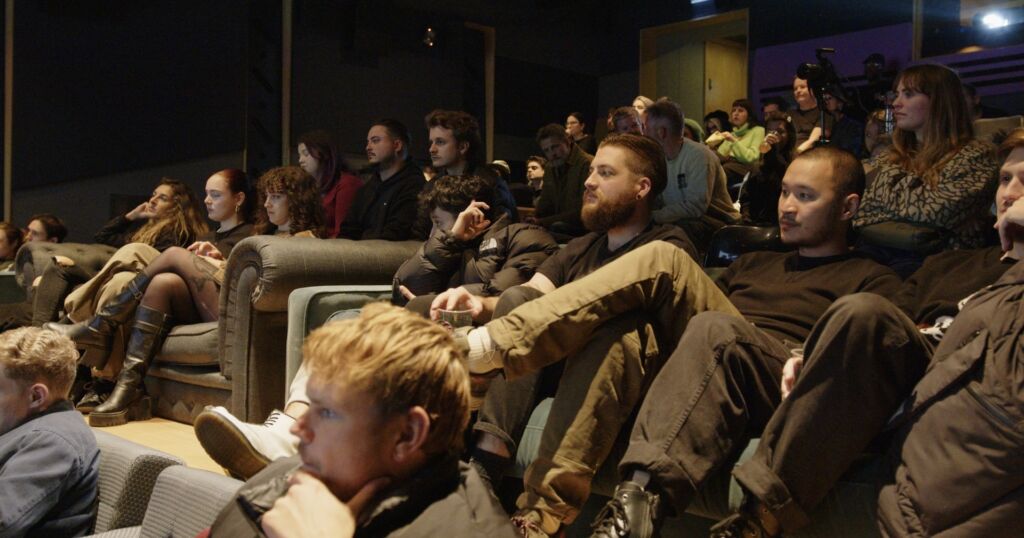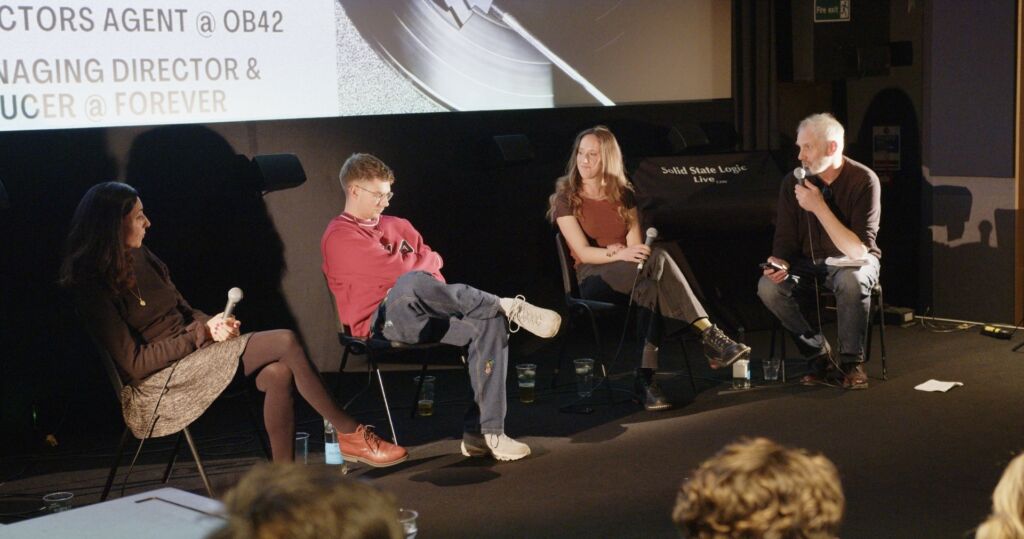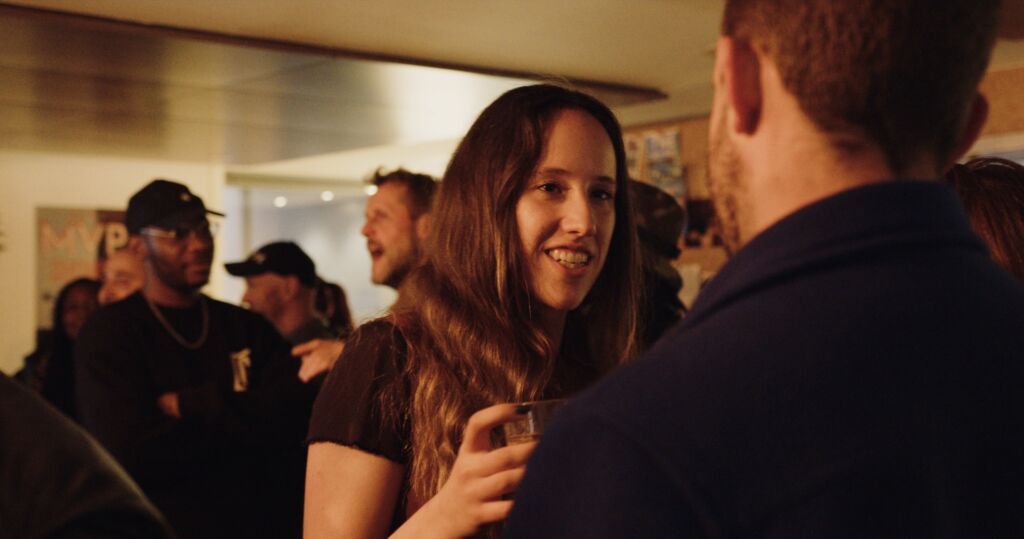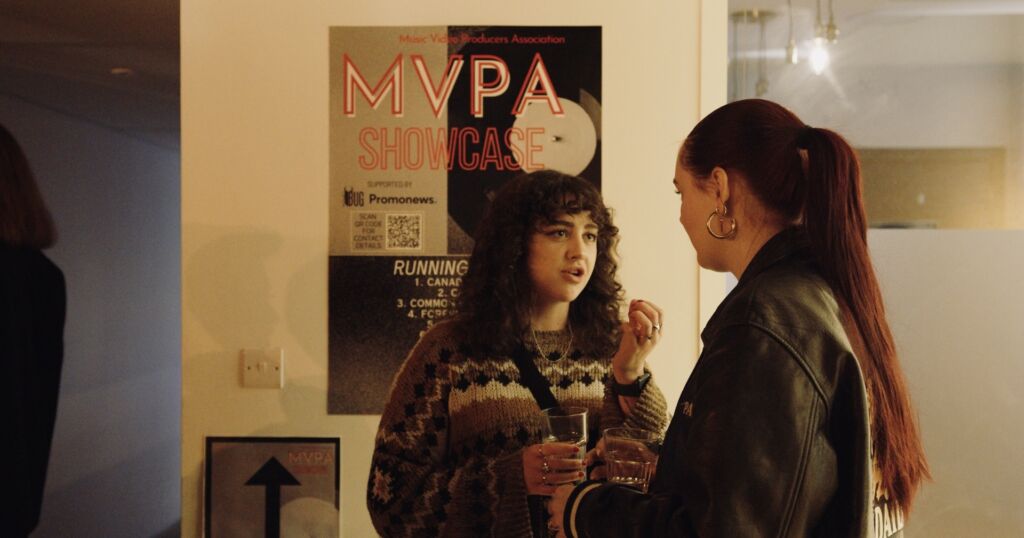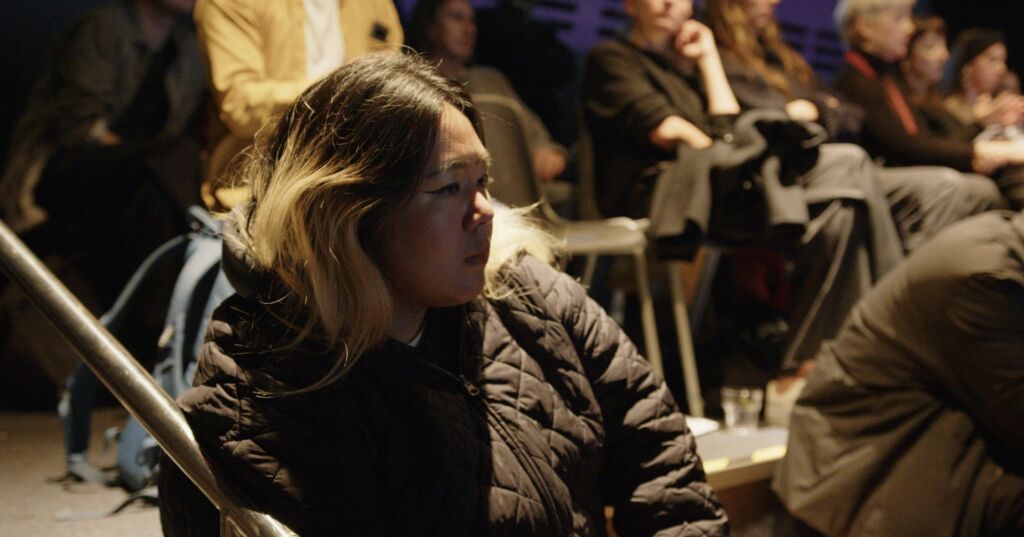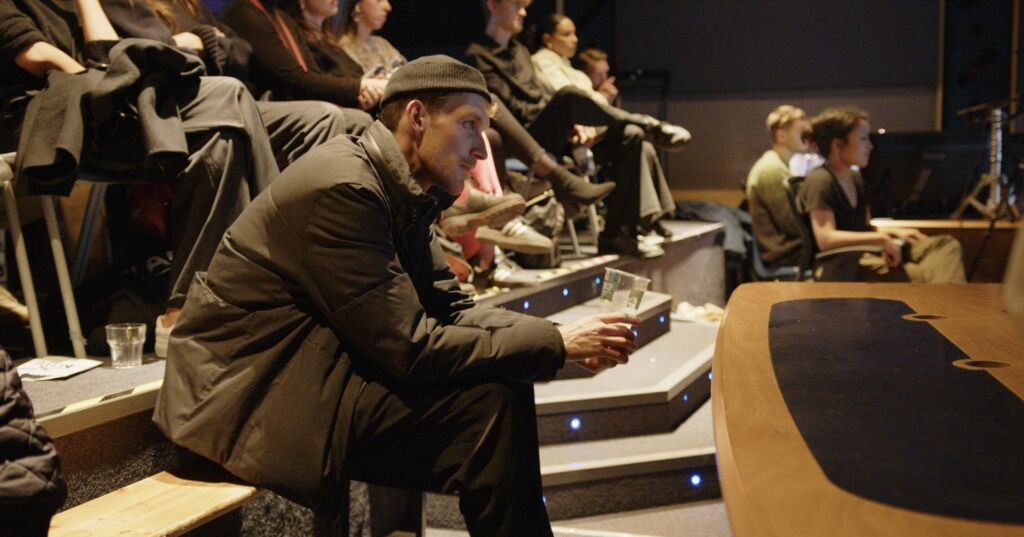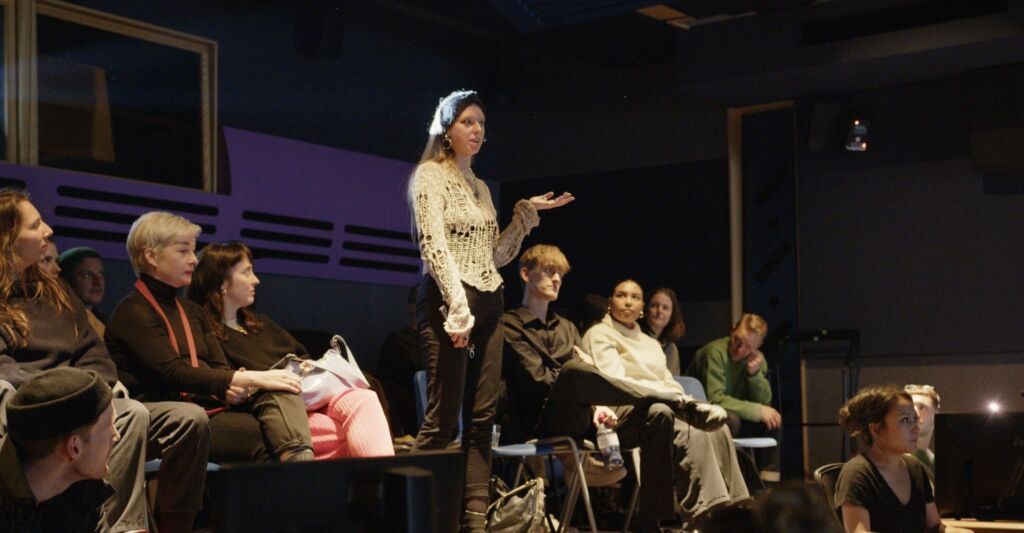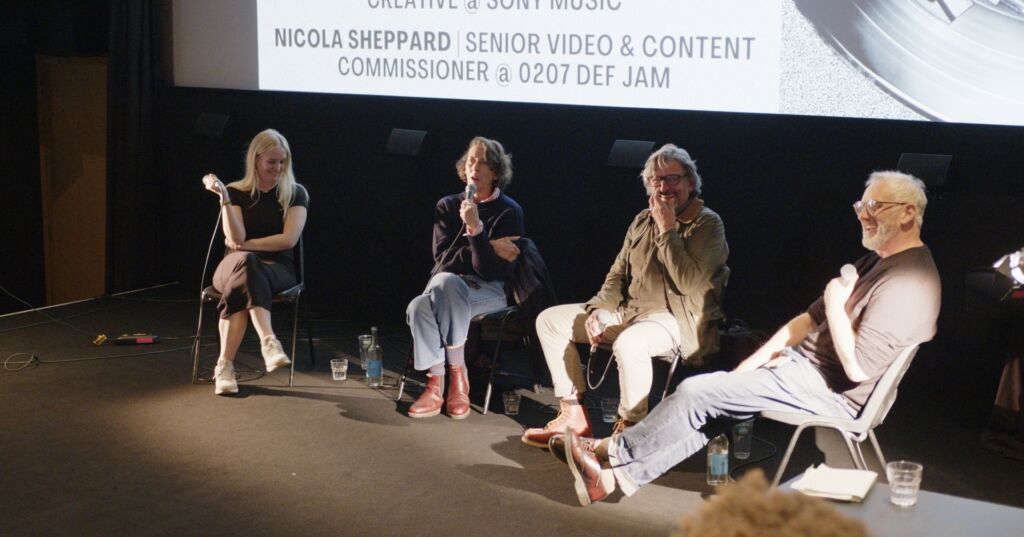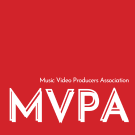MVPA – Music Video Producers Association Showcase Recap & Photos
The Music Video Producers Association (MVPA) Showcase, supported by Promonews and BUG, was a private event that took place on October 17th, it was aimed at celebrating the creative achievements of 13 production companies from the MVPA. These production companies showcased their talented music video directors.
In a series of insightful panel discussions, expertly chaired by David Knight, industry leaders came together to explore the rapidly changing landscape of music videos and talent acquisition, shedding light on the evolving world of music video production. These discussions took place during MVPA (Music Video Producers Association) Showcase on October 17th, 2023 at All Is Joy Studios in Soho.
The first session featured a panel discussion titled “What Is The Value of Music Videos?” The panel, included:
Henry Whittingdale | Head of Marketing @ Room Two Recordings & Senior Marketing Manager @ Columbia Records.
Luna Cohen-Solal | Senior Audience Manager @ Atlantic Records UK.
Ramy Dance | Founder & Executive Producer @ Common People Films.
Tara Bartlett | Head of Special Projects @ Lowkey Films.
The panel discussion began by highlighting the importance of understanding how visual content is consumed and how the consumption of trends is evolving.
Luna emphasized the diversification in how people engage with music video content. She highlighted the rise of vertical content and its impact on video consumption, emphasizing that TikTok, in particular, has become a significant platform for music discovery. This shift has been gradual but transformative. She stressed the need for directors and production companies to think holistically and create narratives that flow across various platforms and content types, including vertical videos and social content. The focus should be on expanding the idea of music videos to exist seamlessly within a broader content strategy.
“The scope for creativity is massive, with many unexplored ways of marrying music videos and social content.” – Luna Cohen-Solal
Henry discussed the significance of music videos as a destination for turning listeners into fans and conveying an artist’s vision. He also mentioned his view on TikTok as a complementary discovery platform, encouraging directors not to be afraid to incorporate it into their creative process.
Tara spoke of the shift from traditional music video production to creating a broader range of visual content for artists, including marketing and social media content. This shift has led to changes in budget allocation and the need to find new ways to fund music video production.
“I think there’s really interesting space in creative direction now and a director coming on much earlier in a project with a marketing team and looking at the more visual world-building of an album campaign or a single campaign.” – Tara Bartlett
Ramy emphasized the value of music videos for directors, serving as a training ground for their careers. He stressed the importance of nurturing emerging directors through music video projects.
Tara and Ramy both emphasized the need for better collaboration and communication between production companies, labels, and artists. They discussed how transparency and shared visions could lead to more fruitful and valuable music video projects.
“Everyone is fighting the same fight; it’s just about us communicating and aligning a lot better.” – Ramy Dance
The panel concluded by suggesting that the traditional binary view of music videos and social assets should evolve into a more holistic approach where both seamlessly coexist within the same narrative. The music video landscape is continually changing, and there is great potential for creativity in exploring new ways to deliver content to fans.
“There’s a real paradigm shift at the moment. It’s not just about music videos but a broader content strategy. It’s a change in how we’re thinking about things, creating a world for the artist.” – Henry Whittingdale
——–
Talk 2, titled ‘How To Spot, Nurture & Develop Talent’ brought together figures from the music and creative industries for an engaging discussion on talent spotting, nurturing, and development. The panel explored the rapidly changing landscape of talent acquisition and development with the insights and perspectives of:
Sasha Nixon | Managing Director & Executive Producer @ Forever
Polly Millner | Director’s Agent @ OB42
Louis Danckwerts | Senior Creative Commissioner @ Polydor Records
The dialogue revolved around the shifts in approaches to talent acquisition, emphasizing the expansion of the search for emerging talent.
Sasha highlighted the intensifying competition in the creative industry due to a significant increase in people looking for talent. The industry now features directors as young as 22 who have grown up in a tech-savvy environment, thus offering fully-formed talents at such early points in their careers. She discussed her use of platforms like Instagram and Vimeo to identify new talent and underlined the importance of being quick and efficient in this competitive environment.
“You’re competing with lots of reps who’ve seen everything. We’re all watching everything together.” – Sasha Nixon
Louis explained how record labels are adapting to the evolving landscape. He noted that in the current climate, there’s a significant squeeze on middle-budget projects. As a result, there’s an advantage in developing talent in-house, fostering a direct relationship with artists and their creative processes. This approach can work well for new artists; however, as artists grow, the support of a production company becomes indispensable for pushing creative boundaries and providing the necessary resources.
Polly emphasized the significance of diversifying talent acquisition. She mentioned that agents and production companies now look for directors who can bring a unique voice and vision, extending beyond music video directors.
The discussion also explored the dynamic nature of short-form content and how directors need to adapt their creative visions to suit specific platforms and artist requirements.
Regarding the preference of freelance directors versus signing with production companies, it was recognized that some successful freelancers prefer maintaining their independence, and appreciate creative freedom. However, production companies can provide vital support, advice, and a familial atmosphere to help directors navigate the industry.
Gender and diversity were essential considerations within the industry, with artists often expecting representation from diverse backgrounds in their projects. The panel acknowledged positive changes in the industry in response to these considerations.
In the context of transitioning from music videos to commercials, it was highlighted that discussions at the project’s outset are crucial. These conversations help agents and directors strategize how each project can aid in developing directors’ craft and expanding their reach.
“Music videos act as stepping stones, allowing directors to experiment with different creative styles and formats.” – Polly Millner
Selling talent to advertising agencies was also acknowledged as a challenge, with quality work being the primary focus. It was noted that the industry’s three-director pitching limit in commercials presents a hurdle for young talent looking to break into the field.
“Selling has changed, it’s the kind of thing that we talk about all the time with directors, like how you can make work that can be translatable into commercials.” – Sasha Nixon
In conclusion, Talk 2 unveiled the ever-changing nature of talent spotting, nurturing, and development in the creative landscape. It emphasized the need for diverse voices, adaptability to short-form content, and the importance of discussions and strategy when transitioning talent to new creative endeavours.
——–
Talk 3, ‘What Are Commissioners Looking For?’ delves into the evolving landscape of music video production. Three industry experts dissected the shifts in the traditional roles of commissioners, artists, and labels, focusing on the proliferation of voices and stakeholders in the decision-making process. With a keen eye on adapting to changing trends, they addressed the transition from music videos being the primary discovery point for music to the rising prominence of short-form content in the industry. The final panel featured:
Ailsa Robertson | Freelance Music Video Commissioner
Mike O’keefe | Vice President Of Visual Creative @ Sony Music
Nicola Sheppard | Senior Video & Content Commissioner @ 0207 Def Jam
Nicola Sheppard began by highlighting that the process of music video production has become more complex, with multiple stakeholders involved in decision-making. Commissioners must now be patient and understand that not all their preferred ideas align with label budgets and timelines.
Ailsa Robertson, as a freelance commissioner, offered a different perspective, emphasizing the fast-paced nature of her work and the importance of quickly identifying key decision-makers on a project. Knowing who holds influence is crucial in managing differing creative visions.
“When it’s a new project with people you’ve not worked with before, it’s important to know who else is on that project that you’re not necessarily talking to on a daily basis.” – Ailsa Robertson
Mike O’Keefe shared insights about how the role of music videos has evolved, with the emergence of short-form content and changing consumer behaviour. He discussed the need to strategize the creation of music videos more carefully, collaborating with marketing teams to align content with an artist’s overall branding and goals.
The discussion shifts towards budgets, with Nicola Sheppard noting the shift toward producing more content and the challenges associated with tight timelines. Ailsa Robertson emphasized the significance of the production team when budgets are smaller, as they often must wear multiple hats to get the job done. Both Mike and Ailsa highlighted the importance of delivering high-quality content over quick, but potentially less impactful, work.
“With fast-produced work, you can have good and cheap, but it won’t be quick. Or you can have fast and cheap, but it won’t be good. And we normally go for faster and cheap.” – Mike O’keefe
The audience then asked about the requirements for pitching high-budget music videos. Nicola Sheppard explained that it varies for each artist and project but suggests that highly detailed and exciting treatments can capture an artist’s attention. On the other hand, Mike O’Keefe, with larger budgets, prefers initial top lines before detailed treatments to allow for creative development through conversations.
The audience also asked about scenarios where a brilliant idea is presented by a director with a weaker portfolio. Mike and Ailsa stressed the importance of building a strong production team around the director to realize the idea, and they may even act as executive producers. Nicola notes that commissioners can play a role in connecting directors with established teams that can facilitate their visions.
Lastly, the discussion explored the concept of visualizers and simpler music video content. Mike clarified that the term “visualizer” is a way of defining content to manage expectations, but it’s not limited to simple ideas. Ailsa and Mike acknowledged the past prevalence of music videos with compelling single-shot concepts and appreciated the point made by an audience member about the blurred lines between music videos and visualizers.
In conclusion, the panel explored the dynamic and challenging landscape of music video production. This included the shift towards content creation, the need for strategic planning, and the support for emerging talent. Commissioners and labels are adapting to the evolving industry, striking a balance between creativity and practical constraints in the fast-paced world of music video production. The key takeaway from the discussion is the importance of understanding the changing dynamics and embracing a willingness to adapt in the face of new opportunities and challenges.
We look forward to hosting another MVPA Showcase in 2024.
